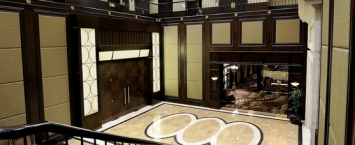In Korea, Pae Baek ceremonies are held after the wedding ceremony itself and while our modern culture's marriages represent the joining of two individuals, the Pae Baek Ceremonies lean toward a more traditional view focusing on the joining of the two families.
This traditional wedding ceremony is far from the limitations of white dresses and black tuxes, but rather a variety of more prominent colours!
The traditional attire worn during these ceremonies are called Hanboks. The vivid colours of the Hanboks have deep symbolic meaning, showing their emergence into a new chapter of their lives with a brightness of spirit; so the brighter the colour the better!
The Ceremony is taken place with the parents seated at a table, the couple enters and bow to them in respect followed by kneeling down and pouring them tea or rice wine. The parents then give words of wisdom and blessings to the couple for a happy marriage and future.
Followed by the blessings, the ceremony is carried on with playful piggybacks continued by the tossing of chestnuts and dates over a piece of fabric held by the couple. This part of the ceremony represents the support the husband will give to his wife, and number of the children (dates=girls or chestnuts=boys) that the bride will have in the future.
All in all, the Korean Pae Baek Ceremonies are meaningful and symbolic in which every aspect of the day is a representation of significant meaning and should not be taken lightly; although the colours of the Hanboks can be quite playful, this traditional ceremony is a considerable aspect of the Korean wedding ceremonies and are proceeded in a respectful manner.
Don't know where to find Hanboks? Well, look no further!






















































